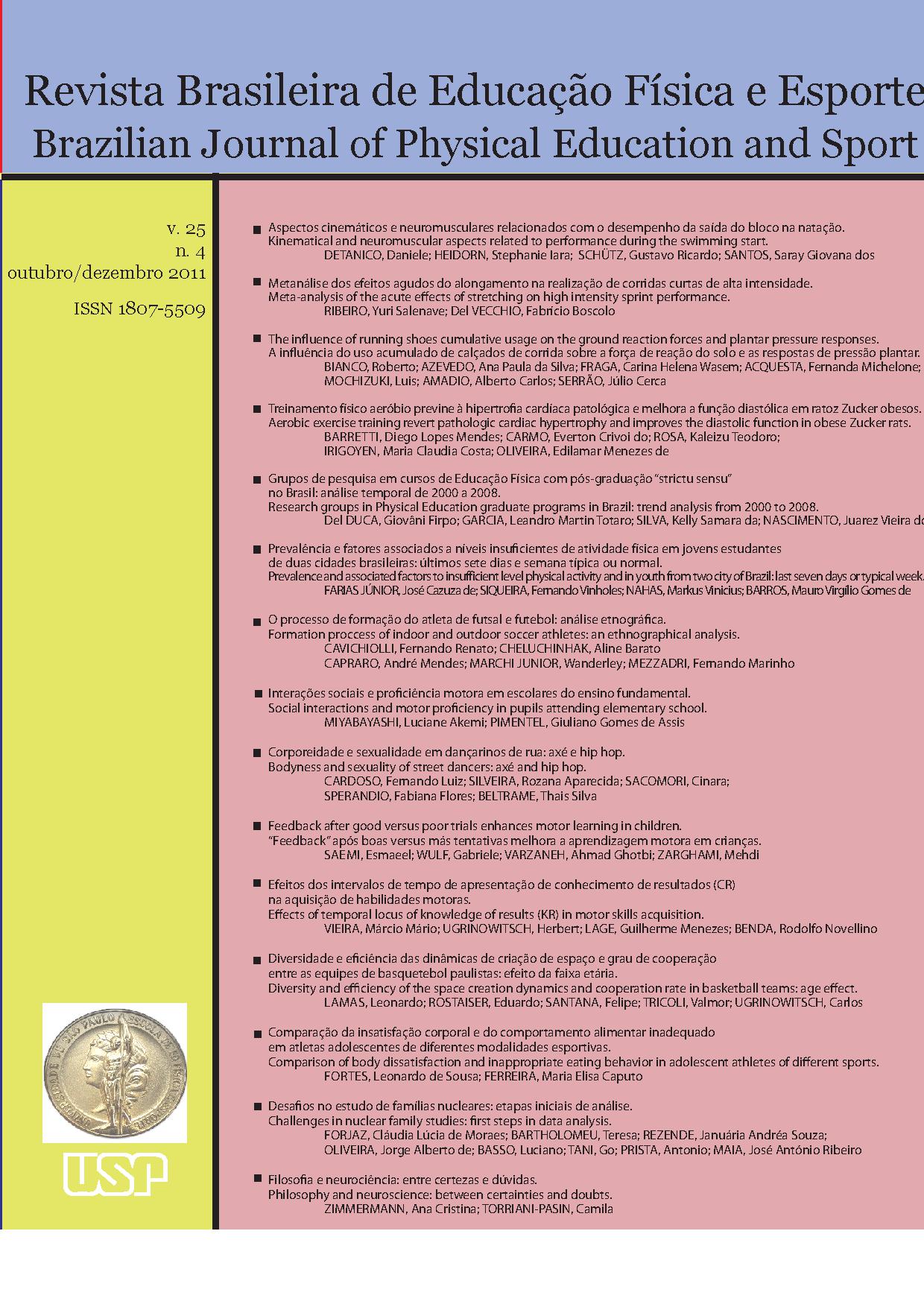Diversity and efficiency of the space creation dynamics and cooperation rate in basketball teams: age effect
DOI:
https://doi.org/10.1590/S1807-55092011000400013Keywords:
Space creation dynamics (SCDs), Opposition, Game analysis, Offensive tactics, ReproducibilityAbstract
The aim of the present study was to evaluate the effect of competitive experience in the following performance variables: 1) diversity of the Space Creation Dynamics (SCDs); 2) efficiency of the SCDs (i.e. successful SCDs/total amount of SCDs); 3) offensive cooperation (i.e. number of passes and assists). A total of 46 matches of all age goups (i.e. pré-mini to seniors) of the São Paulo state championship for men were analyzed. Measured/ calculated variables: 1) SCDs performed; 2) SCDs efficiency; 3) passes performed on ball possession; 4) assists performed. Researcher's reliability was tested in three moments with one week apart of each other (Kappa rates: 0.78-0.85). SCDs diversity presented no significant difference for any SCD class among all age groups. Intra-age analysis, against man-to-man defense, presented significant prevalence of "Desmarque com Bola com Drible" for younger players (pré-mini to infantil) and of "Bloqueio Direto" for older players (juvenil and seniors). Against zone defense, "Desmarque sem Bola" was significantly more frequent for all age groups in comparison to all others SCDs, except for "Desmarque com Bola com Drible". It was not observed a significant difference for efficiency of the SCDs at any age group. All age groups presented similar distribution regarding frequencies of number of passes and assists as well. These results contradicted the preliminary hypothesis, which expected an increase in complexity and diversity of actions paralleled with an increase in players' competitive expertise. These evidences suggest the need of cooperation and collective-focused teaching games methodology.Downloads
Download data is not yet available.
Downloads
Published
2011-12-01
Issue
Section
Artigos Originais - Pedagogia e Comportamento
License
Todo o conteúdo da revista, exceto onde está identificado, está licenciado sob uma Licença Creative Commons (CC-BY)
How to Cite
Lamas, L., Rostaiser, E., Santana, F., Tricoli, V., & Ugrinowitsch, C. (2011). Diversity and efficiency of the space creation dynamics and cooperation rate in basketball teams: age effect . Brazilian Journal of Physical Education and Sport, 25(4), 693-705. https://doi.org/10.1590/S1807-55092011000400013


